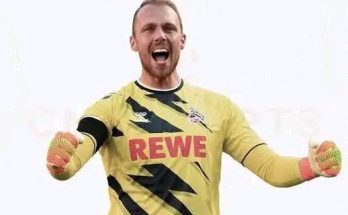Following their legendary careers on the court, NBA icons Stephen Curry and Chris Paul are embracing a new role off it devoted family men. With retirement officially in the books, both superstars have made it clear that their top priority isn’t broadcasting gigs or business ventures, but quality time with their loved ones.Both men have reached a point in their storied careers where the court’s roar is being outshone by quieter, more personal ambitions: a life spent cherishing family first. For Curry, longstanding as a three-time NBA champion and transformative shooter, and for Paul, a gifted floor general and mentor who has earned respect across teammates and franchises, the transition away from the game isn’t merely about retirement—it’s about embracing fatherhood, partnership, legacy, and purpose beyond the hardwood.
Stephen Curry, 37, remains under contract with the Golden State Warriors through 2027, yet his focus has subtly but unmistakably shifted toward family foundations and future investments in people, not just play. As of recent statements, Curry—who shares four children with his wife Ayesha (Riley and Ryan born in 2012 and 2015; Canon in 2018; and Caius in 2024) —has prioritized thoughtful planning for life after basketball, going beyond mere speculation into tangible action involving his alma mater, his foundation, and his broader philanthropic ecosystem.
An early signal emerged when Curry stepped into a front-office advisory role at Davidson College—his undergraduate basketball home—becoming Assistant General Manager of their basketball programs while still an active NBA player . This represents a rare, groundbreaking case of an elite athlete transcending the traditional player-to-executive pipeline by beginning the transition while still competing. Through this role, he provides guidance to both male and female student-athletes, leveraging experiences from his own collegiate and professional journey . His involvement is just part of a wider eight-figure fund he and Ayesha launched to bolster both men’s and women’s programs at Davidson —an act that underscores the couple’s conviction in sustaining athletic opportunity and equity.
Meanwhile, Curry’s non-profit, the Eat. Learn. Play Foundation—co-founded with Ayesha in 2019—continues to ripple through Oakland, where the family once resided. Its emphasis on feeding, educating, and enriching children has materialized in over 25 million meals, renovation of 12 playgrounds, and $6 million invested in literacy programs . And in May 2025, Time magazine acknowledged their humanitarian work by naming the Currys among the most influential figures in philanthropy . Their vision is intentional: Steph has remarked that “when the ball stops bouncing, the work won’t stop”—an assertion that’s proven remarkably prophetic .
Beyond his charitable footprint, Curry is positioning himself authoritatively in the media and business worlds. He’s preparing for a broadcasting career, citing inspirations like Tom Brady, and is said to be drawing attention from networks ready to lure him post-retirement . He also holds trademarks for “Thirty Arena” and “The 30,” presumably investing in naming rights or building an arena—perhaps a physical monument to the legacy he’s crafting . And the prospect of owning an NBA team—much like Michael Jordan or LeBron James—is no longer a distant reverie. In interviews, he’s spoken about following in Jordan’s footsteps, with franchise ownership a central ambition .
While Curry gears up for these commitments, he hasn’t abandoned his role as a father and husband. He recently enjoyed moments like attending his son Canon’s fleeting handshake in the Chase Center locker room during Andre Iguodala’s jersey retirement ceremony . Off the court, he makes an effort to pick up Riley and Ryan from school, pick up Canon from daycare, and soak in the daily joys of parenthood—balancing recovery days with family time .
On the other hand, Chris Paul—now 40 years old—may be closer to the final minutes of his playing career, but he too is equally, if not more, steadfast about what comes next. After spending the 2024‑25 season with the San Antonio Spurs, Paul is out of contract and in free agency. He’s expressed that family has become his top priority—and not just a highlight reel priority, but a living, breathing emotional cornerstone. He’s been separated from his wife Jada and their two children for the last six years, as they’ve remained based in Los Angeles, and taking stock of that distance has prompted personal reckoning .
On appearances like The Pat McAfee Show, he reflected on living apart from his loved ones and acknowledged that, while he still loves to hoop, he doesn’t want to sacrifice family time unless the motivation is meaningful enough . He’s hinted at wanting to finish in Los Angeles—potentially with the Lakers or Clippers—or retire entirely, but the certainty lies in wanting to “be a dad” and “be home” .
Even if Paul were to return to the court, he’s prepared to do so on minimal financial terms, having amassed some $400 million during his career . His next destination—a LA-based team, the Spurs again, or a step into retirement—will hinge more on personal balance than game stats. He’s also begun contemplating life post-playing: media work, mentorship, coaching youth, or even NBA franchise ownership—he has coached AAU teams, invested in other sports like cricket and baseball, and sounded open to building new ventures .
Paul’s recent season gave a remarkable capstone to his career arc: playing all 82 games in his 20th NBA season—a league-first milestone that honors both physical durability and mental resolve . And yet, he’s described the internal tug-of-war vividly: “The hardest part is when I get home and have to watch my kids’ games on the iPad… If I’m gonna sacrifice my family and be away from them, then I at least need to be playing” . That statement encapsulates the essence of his transition: choosing presence over performance.
Their trajectories, while unique in specifics, converge on a shared truth: life after the final buzzer is not the end, but a threshold. For Curry, that threshold involves philanthropy on a massive scale, media and business leverage, and continuing influence within the basketball space—yet a deliberate step back from daily demands. For Paul, it’s a yearning to finally uproot himself to the life he’s played for—the life of a husband present at dinner tables, traveling with family, coaching his kids’ teams, and investing deeply in the next generation.
The love each shares for the game remains undiminished. Curry continues to work tirelessly to stay at peak physical condition, navigating wear-and-tear with recovery protocols (yoga, hydrotherapy, nutrition)—aware that these choices determine how long he can play . Paul still finds joy in competing at elite levels, practices with love, even after two decades—as he commented, part of him still relishes the daily routine of practice and play . But what’s changed is their purpose behind the passion. It’s no longer about chasing championships or records—it’s about chasing meaningful moments off the court.
Paul’s mind has also turned toward ownership. In interviews, he’s outlined how decades of experience—participating in CBA negotiations, witnessing team dynamics, leading off-court initiatives—have prepared him for ownership, where he can influence league culture, player treatment, and business decisions. He’s said of ownership: “you see how a lot of the most successful teams… There’s a bond that’s necessary… It’s an opportunity to impact in a lot of different ways” . Off-court, his ventures include his CP3 Foundation, a production company, and minority stakes in a cricket team and a Triple-A baseball club . Paul embodies the archetype of post-career reinvention: activism, business acumen, and mentorship fused within a life anchored by family.
As for Stephen Curry, there’s a parallel arc. His foundation’s impact, his hands-on role at Davidson, his media foresight, and his relational legacy—together these embody a transition mapped not by the absence of basketball, but by the presence of purpose. He’s also looked beyond basketball to golf—investing in his game and in opportunities within the sport. As early as 2023, Curry had become almost scratch in golf, even winning the American Century Championship . It’s not just a hobby—it’s another pathway for competition, branding, investment, and community building.
Some may chart their retirements as quick fadeouts; these two will stage crescendos. Their retirements aren’t sudden finales—they’re gradual evolution. Even as Curry handles iPads among his kids, networks eager for his voice, and CEOs knocking on his door, his basketball frequency will taper slowly, not stop abruptly. Paul, at minimum, aims to fulfill his desire to live in Los Angeles—whether that means a multi-year encore with the Lakers or Clippers, or a graceful final act as a Spur before settling with his family.
Their families are already their anchors. Curry and Ayesha’s marriage spans more than 14 years—and is strengthened not in spite of fame, but through it . For Paul, his marriage to Jada began in 2011, and their family unit is non-negotiable—even if it has meant alternating seasons apart . Their children someday may watch highlight reels of their fathers on SportsCenter—but will ultimately tell the story of their dads not by points scored, but sleepovers, field trips, birthday dinners, and breakfast table moments.
That contrast is the beautiful one: the court’s final whistle versus the enduring echoes of love, presence, and influence. It’s a triumph for those who imagine life beyond the basket. Curry and Paul are signaling, in plain terms, that even the greatest careers are merely prelude to something deeper. Their legacies—spray rockets, no-look passes, championship rings—are tangible and celebrated. What follows is more intimate, more significant: being the person behind the athlete, the parent behind the star, the changemaker behind the legacy.
So when Stephen Curry finally steps away from official NBA competition, when Chris Paul drapes a jacket over his Hall of Fame legacy, their stories are destined to resonate beyond highlight reels. They will be teachers, philanthropists, mentors, analysts, owners, icons in business, and, above all, examples of how to live with intention. Their families become not just beneficiaries but co-authors of the next chapters. Basketball was always the platform; family, purpose, and legacy are the crescendo.
That is the paradox of their departures: the game doesn’t end—it transforms. And if there is any message in their transitions, it’s that some of the greatest plays happen off the court, in ordinary moments—coaching a sixth grader’s team, filming for a foundation annual, quietly signing a franchise agreement, hugging a son before bed. In those frames, the life after basketball is not life limited—it is life multiplied.



